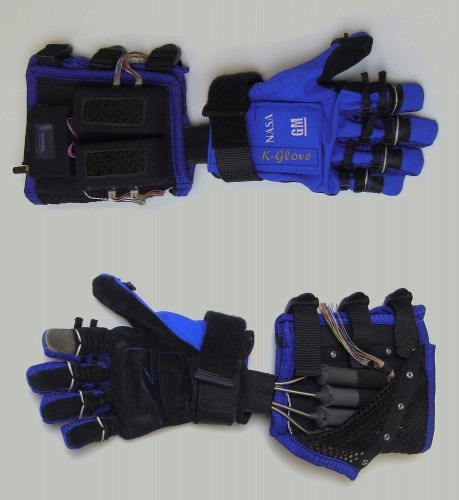NASA And GM Reveal Robo-Glove For Astronauts And Engineers
Tech for astronauts and automotive engineers seldom overlaps, but a robotic glove co-developed by General Motors and NASA could change all that. An offshoot of the Robonaut 2 project from last year, the Human Grasp Assist device – known unofficially as the K-glove or Robo-Glove – promises to make manual labor less intensive as well as reduce the risk of repetitive-stress injuries by cutting the amount of force needed to hold and use tools.
"An astronaut working in a pressurized suit outside the space station or an assembly operator in a factory might need to use 15-20 pounds of force to hold a tool during an operation" the teams say, "but with the robotic glove only five-to-10 pounds of force might need to be applied."

Pressure sensors in the fingertips of the glove track when the wearer is grasping a tool, triggering actuators threaded through the upper section. These augment the user's own action, with synthetic tendons clamping down until the sensors are released.
The current, second-gen prototype weighs around two pounds taking into account the control electronics and actuators, and have a display for programming and diagnostics. The battery – an off-the-shelf LiIon pack more commonly used for power tools – is mounted on a belt-clip battery with a belt-clip; a third-gen prototype is already in the works, reducing both bulk and weight.
NASA and GM say the tech is on course for worker use "in the near future."
[vms 9642de5ca0c544f31b2e]
